Warehouse Robotics Gain Picking Prowess
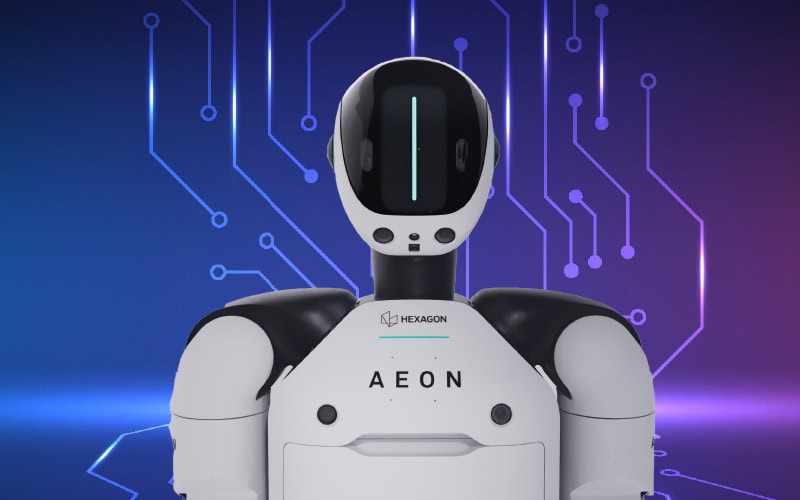
Making advancements in dexterity and finesse, warehouse robots take on more supply chain applications.
Ambi Robotics Sells Out AmbiStack for 2025
AmbiStack—the latest product from Ambi Robotics, a provider of AI-powered robotic sorting and stacking solutions for warehouse operations—is sold out for 2025, four months after being introduced to the market in January 2025.
AmbiStack is an AI-powered robotic stacking solution designed to optimize materials handling operations. It can pick and place multiple items simultaneously, exceeding manual palletizing rates. Its modular design enables sorting and stacking to multiple pallets with a single machine, reducing the need for pallet removal and enabling round-the-clock operations.
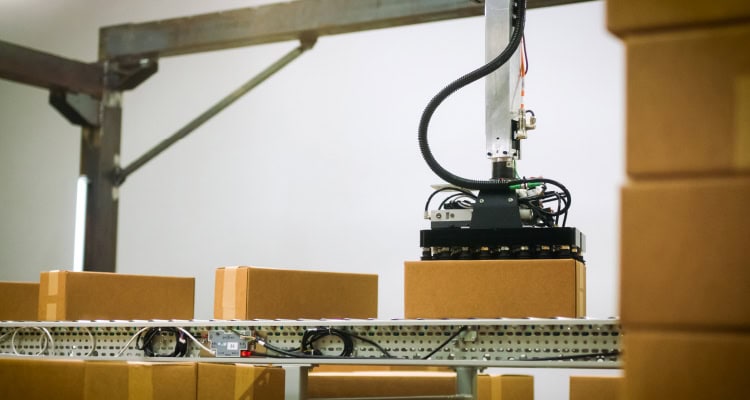
Ambi Robotics AmbiStack
Pre-trained in simulation, AmbiStack is ready to deploy from day one and can adapt to different facility layouts. It uses simulation to reality (Sim2Real) reinforcement learning to stack random boxes with high density.
Post-deployment, AmbiStack continuously improves its performance by leveraging data collected in real-world operations. This data-driven feedback loop drives its long-term value.
Ambi Robotics follows strict protocols for data access, handling, and retention to safeguard customer information. The company conducts regular security audits and testing, including third-party penetration tests.
All customer data is encrypted at rest and in transit, and the AmbiOS operating system is hosted across multiple geographically distributed data centers with built-in redundancies. Ambi Robotics supports customer Single Sign-On (SSO) for login and uses data for remote support and continuous system improvement, including AI retraining.
With 2025 inventory fully reserved by Fortune 500 shipping and logistics customers, Ambi Robotics is now ramping up its production capacity; its manufacturing capabilities will be scaled to fulfill demand from customers waitlisted into 2026.
DHL Group Signs On for 1,000 More Robots
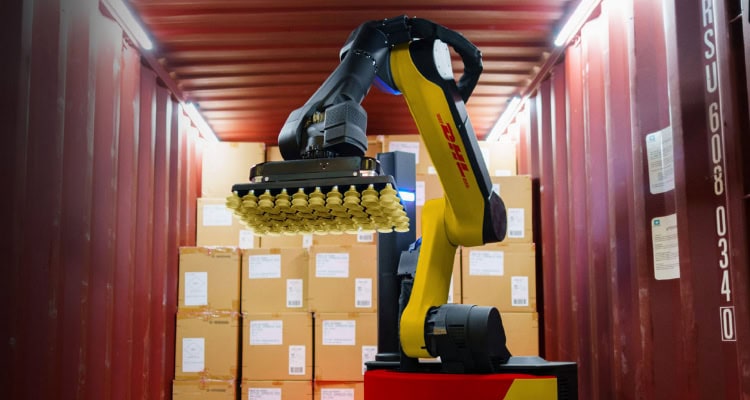
Stretch robot working for DHL
DHL Group signed an agreement with robotics company Boston Dynamics that paves the way for the global deployment of more than 1,000 additional Stretch robots. Designed for case handling, the Stretch robot has been deployed by DHL to automate container unloading. Looking ahead, DHL plans to expand the range of applications for the robots, including additional use cases such as case picking.
DHL Supply Chain, the Group’s contract logistics division, introduced Stretch commercially in North America in 2023 and more recently expanded deployments to the United Kingdom and across Europe. The deployments of Stretch have achieved case unloading rates of up to 700 cases per hour and contributed to higher employee satisfaction by reducing the need for physically demanding work in hot or cold trailers.
The partnership has also driven joint product development with end-to-end automation solutions integrating conveyors and palletizers, as demonstrated in a UK project. To further build on these applications, DHL Group is actively exploring how the technology can benefit other business units. A key priority is case picking, the most labor-intensive activity within DHL Supply Chain.
Across its global network, DHL Group now uses more than 7,500 robots, more than 200,000 smart handheld devices, and about 800,000 IoT sensors to optimize operations, enhance working conditions for employees, and deliver value for customers.
Hexagon Debuts Bespoke Humanoid Robot
Measurement technology company Hexagon introduced a humanoid robot AEON, which is designed for a range of industrial applications—from manipulation to asset inspection. Its warehousing applications will include teleoperation, pick and place, inspection, reality capture, and precision tasks such as high-definition scanning.
Built in collaboration with Hexagon’s technology partners Microsoft, NVIDIA, and maxon, AEON can perform a variety of tasks, from scanning industrial components to creating digital twins. Its capabilities include:
Continuous runtime: With a battery swapping mechanism, AEON does not need to recharge to continue to operate, allowing for 24/7 operations.
Agility: AEON combines dexterity and locomotion with wheeled legs, using Hexagon’s measurement technology, to move quickly and perform high-accuracy tasks.
Awareness: Bringing together spatial intelligence and AI-driven reasoning, AEON merges data to understand its environment.
Autonomy: AEON can operate continuously without direct supervision.
Arvato Speeds Up Order Picking with New Rack-to-Person System in Poland
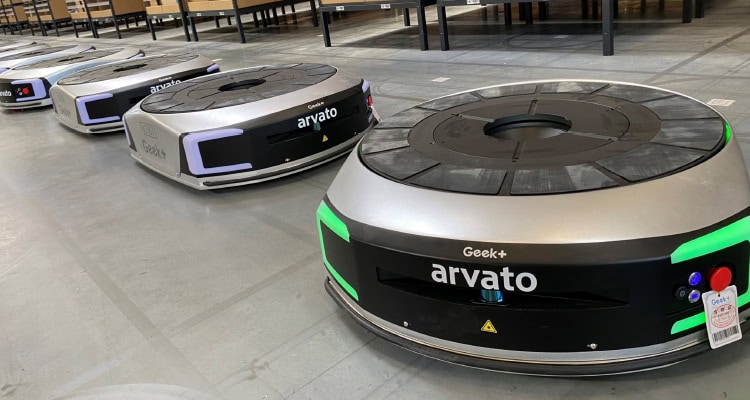
AMRs at Arvato center
Arvato, a logistics service provider specializing in supply chain management and ecommerce, recently implemented a new rack-to-person system at its logistics center in Poznan, Poland—increasing the efficiency of goods picking and warehouse processes for the online business.
The new system utilizes advanced robot technology to support order picking for employees. The autonomous mobile robots (AMRs) transport the warehouse shelves with goods to the picking stations in the 516,000-square-foot logistics center in Poznan. The robots move around the warehouse using a camera system and navigation codes. The direct delivery of shelves to the work stations, where employees pick the goods according to the order, streamlines and accelerates the picking process.
Once picking is complete, the robots automatically return the shelves to the correct storage location. They also use historical data and heat map analyses to determine the ideal warehouse and stock layout as well as storage location for each item.
AI helps the rack-to-person robots navigate, recognize their surroundings, and optimize routes, which allows them to perform tasks efficiently and precisely. The robots are used in a closed storage zone, with sensor gates ensuring that employees do not accidentally enter the robots’ working area. The solution also enables continuous operation, which increases productivity and operational efficiency.
Hikrobot Integrates Wiferion Technology into AMRs
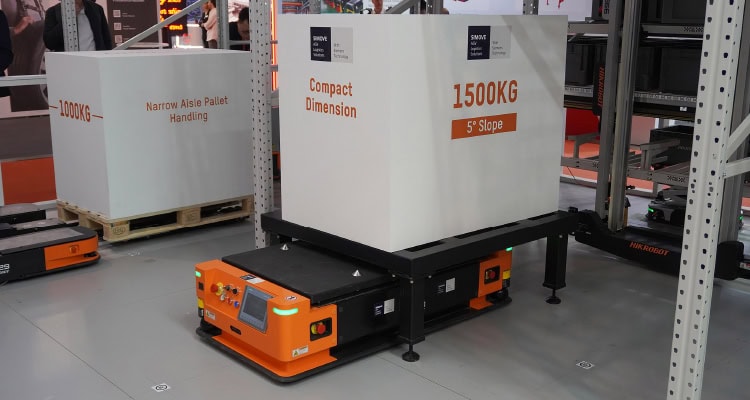
Hikrobot AMR
Hikrobot, a provider of mobile robotics, now works with wireless charging technology from Wiferion. With inductive charging, mobile robots can work without interruption. There are no open contacts, which increases safety and reduces maintenance costs. As fixed charging zones are no longer necessary, companies gain valuable space for other processes. In addition, the standardized energy supply enables integration into mixed AMR fleets.
Offering more than 1,450 AMR types, Hikrobot covers a range of applications in logistics, automotive production, electronics manufacturing, and photovoltaics. Hikrobot is already using inductive charging technology in the heavy-duty AMR H7, which transports large components in automotive production. The charging solution fits directly into the production flow, allowing robots to pick up energy during their normal work.
AMT Launches Flexible Collaborative Palletizing Solution
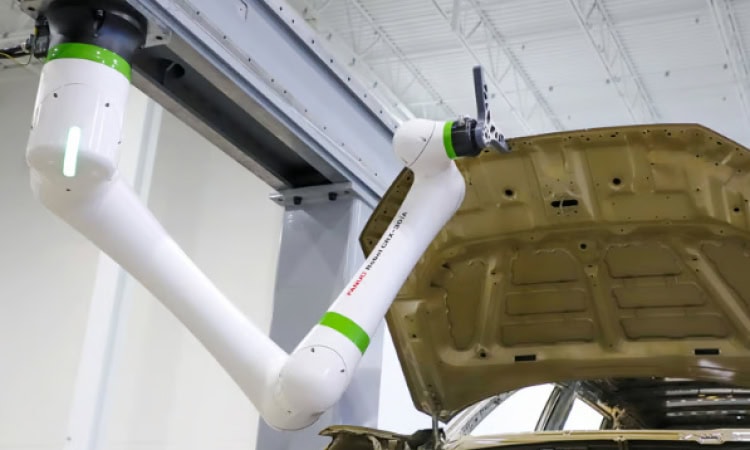
FANUC CRX-30iA
Applied Manufacturing Technologies (AMT) introduced a plug-and-play collaborative palletizing solution built around the FANUC CRX-30iA robot. AMT, a FANUC Level V Authorized System Integrator, optimized the system for case handling: It can stack boxes with precision and consistency and can adapt to different case sizes and patterns. Offering fast deployment, intuitive operation, and minimal floor space requirements, the solution is designed for packaging operations in food and beverage, logistics, and pharmaceutical sectors.
The cobot palletizing solution allows manufacturers to increase throughput, reduce ergonomic risks, and maintain uptime. AMT’s solution features a custom-developed user interface (UI) that simplifies setup and lets end users create and modify palletizing patterns independently.
The system can integrate with existing warehouse management systems (WMS) and offers operator independence: No engineering support is needed to reconfigure for new products or pallet patterns. Starting at $120K, AMT’s palletizing solution typically delivers return on investment in under one year. The system is designed to be easily moved between lines, allowing operators to make quick position adjustments and resume palletizing within minutes.
Brightpick’s Autopicker 2.0 Matches Human Picking Productivity
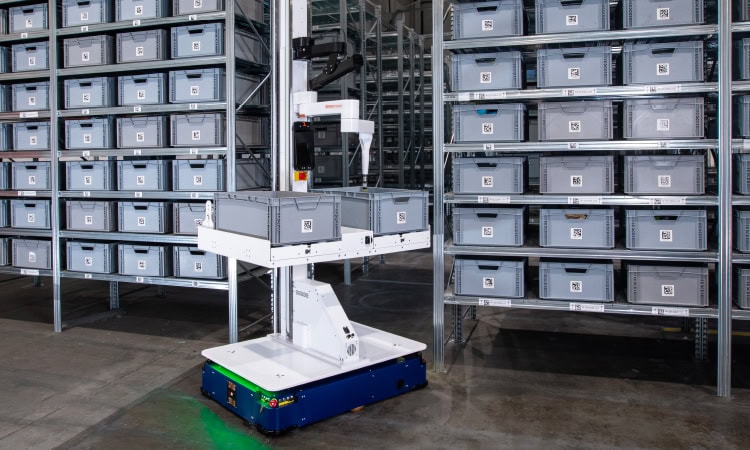
Brightpick Autopicker 2.0
Brightpick, a provider of AI-powered robotic solutions for warehouses, unveiled Autopicker 2.0, the latest version of its flagship multipurpose AI robot.
Featuring the company’s Intuition software, now including Physical AI and picking-in-motion, and a redesigned hardware platform, Autopicker 2.0 delivers on average 70-80 picks per hour, matching the productivity of a typical warehouse associate.
The new Autopicker is the result of five years of integrated hardware and software development, enhanced by Brightpick’s advancements in robotic AI technology. Compared to the first-generation model, the new Autopicker boosts throughput by 50% per robot, with 40% faster picking and 20% increase in travel speed.
Designed for human-like versatility, Autopicker is a multipurpose mobile manipulator that automates a wide range of warehouse workflows, moving between tasks and workstations. Each robot is equipped with “eyes” (3D vision and LiDAR), “legs” (a mobile base), “hands” (a robotic arm) with a “sense of touch” (advanced force and suction sensors), and a “brain” (Intuition with Physical AI) to perform complex tasks with human-like precision.
In addition to AI-powered robotic order picking, Autopicker supports goods-to-person picking for heavy or bulky items; assisted pallet picking for fast-moving SKUs; order buffering and sortation; and stock replenishment. When paired with Brightpick’s new Giraffe robot, Autopicker can store and retrieve items from heights of up to 20 feet.
Autopicker 2.0 also features a new capability called Picking-in-Motion. Instead of remaining stationary while picking an item, Autopicker begins traveling toward its next destination immediately after retrieving a storage tote—completing the pick while on the move.
It then drops off the first storage tote at an empty slot near the next pick location before collecting the next tote. This nearly continuous movement reduces cycle time per pick—on average by 15-20 seconds.
Picking-in-Motion software is also backward-compatible with existing Autopicker 1.0 systems.
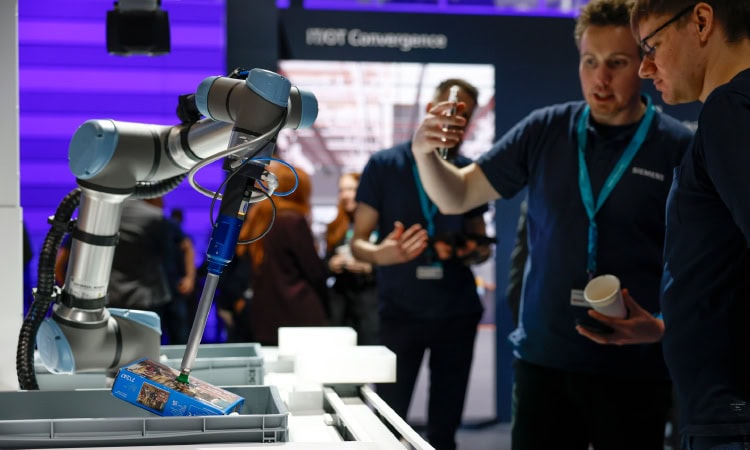
Siemens’ Simatic Robot Pick AI Pro software in action
The latest Autopicker robot is built on a new hardware platform that is 40% more compact and 20% faster in travel and tote-loading speeds. In addition, its battery capacity is doubled, allowing for up to 12 hours of continuous operation on a single charge.
Brightpick offers Autopicker 2.0 through a Robots-as-a-Service (RaaS) model, minimizing upfront capital investment and enabling immediate cost savings and ROI for users. Pricing starts at $1,900 per robot per month in the United States for a minimum three-year commitment, with additional discounts for longer-term agreements.
Simatic Robot Pick AI Pro Enables Machine Builders to Develop Their Own Robots
Siemens unveiled Simatic Robot Pick AI Pro, an industrial vision AI for the development of AI-supported picking robots. The pre-trained deep-learning vision software from Siemens enables model-free 3D robot picking of unknown objects with individually adaptable vacuum multi-grippers.
The software delivers gripping poses for a wide variety of inventory items in milliseconds, regardless of their shape, size, or packaging. This means that Simatic Robot Pick AI Pro can facilitate the development of autonomous and scalable robot solutions for single-piece order picking for sectors like ecommerce.
Simatic Robot Pick AI Pro is a solution of Siemens Industrial Operations X portfolios, which is part of Siemens Xcelerator. Siemens Industrial Operations X combines software-defined automation and data-driven solutions within industrial ecosystems, aiming to make systems more adaptive.
Industrial Operations X integrates these technologies and enables collaboration between different systems and the use of advanced technologies like edge and cloud computing to optimize and continuously improve operational processes. n
Aligning Real-World Results With Automation Expectations
By Phil Pletcher, Vice President, Solution Automation, FORTNA
 Businesses may find that real-world returns on their warehouse automation systems do not match on-paper promises. Here are questions to ask and steps to take so operations can maximize return on investment.
Businesses may find that real-world returns on their warehouse automation systems do not match on-paper promises. Here are questions to ask and steps to take so operations can maximize return on investment.
How has business changed since the original case for automation? Automated systems are shaped by foundational factors like volume, SKU dimensions, and service level agreements (SLAs). As the world changes and consumer preferences shift, businesses adapt. But it takes effort and intention for automation to do the same. For example, if a system was designed to support two-day delivery but the SLA later shifts to one-day delivery, keeping the system as-is can be a recipe for frustration and downtime. An impact assessment can evaluate the system’s current state against the new requirements, and identify any necessary changes, such as simply adding more robots or making additional changes.
Are you getting the most out of your data? Analytics dashboards monitor a wealth of metrics, from battery usage to faults and other performance data. This information can be used to identify problems before they turn into major issues and cause downtime. For example, if one robot is working significantly slower than others, using data to identify the problem enables operations to take proactive steps to fix the robot before it stops working altogether.
Are you keeping up with preventive maintenance and software updates? Regular equipment maintenance is essential to maximizing the lifespan of automated systems and preventing costly downtime. This maintenance mandate also extends to software—warehouses should make a plan for patches and updates on a regular cadence. Keeping software up to date can keep systems running at peak efficiency, streamline troubleshooting, and enable optimal performance, security, and functionality.
1 Million Robots Work for Amazon

Amazon deployed its one millionth robot in its operations. The milestone robot was delivered in June 2025 to a fulfillment center in Japan, joining Amazon’s global network that now spans more than 300 facilities worldwide.
Amazon also recently introduced a new generative AI foundation model designed to make its entire fleet of robots smarter and more efficient. Called DeepFleet, this AI technology will coordinate the movement of robots across its fulfillment network, improving the travel time of its robotic fleet by 10% and enabling the company to deliver packages to customers faster and at lower costs. Additionally, the company has upskilled more than 700,000 employees through training programs.
Quick-Deploy Solutions
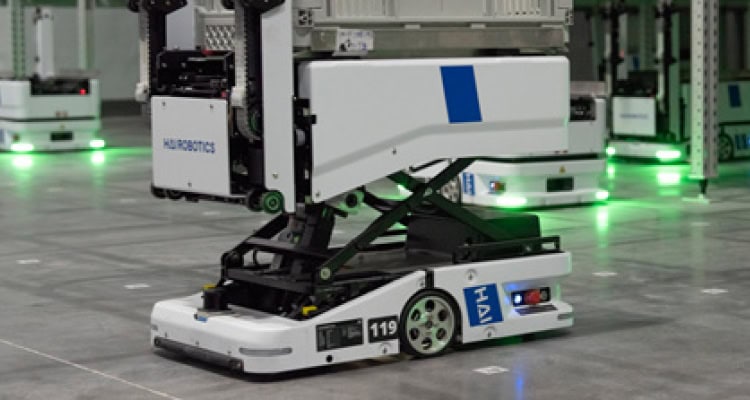
Hai Robotics HaiClimber
No-code solution. The Yale Relay automated lift truck platform addresses cost barriers for warehouses seeking to adopt automation by offering a no-code solution. Its drag-and-drop portal allows for implementation in as little as one day. Mapping facilities involves manually operating the lift truck along the desired route and dropping waypoints in the portal. To make changes to routes, users can select a waypoint and drag it to a new location.
Rental model. Yale’s solution also offers a rental model. The approach rolls all costs into a single monthly fee and enables operations to pilot their program with just one or two trucks and scale as necessary. Software, hosting fees, and ongoing platform improvements are included as part of these fees.
Simplified infrastructure. Hai Robotics’ new HaiPick Climb system provides an automated storage and retrieval system (ASRS) for warehouse environments. The HaiClimber delivers ultra-fast picking—traveling up to 13 feet per second—while requiring only half the connection points of typical climbing robots.
Unlike traditional ASRS that require infrastructure, HaiPick Climb installs on standard racking with climbing channels mounted on one side of the aisle. The robots freely navigate beneath racking to avoid aisle congestion and take the most efficient routes for picking and putaway, enabling rapid fulfillment.
With orders delivered to ergonomic pick stations in as little as 2 minutes—43% faster than conventional systems—HaiPick Climb gives facilities a flexible, high-performance goods-to-person automation option with simplified deployment and use.
